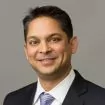In an otherwise routine AIA trial, the PTAB determined that challenged claims in a patent directed to HVAC systems were unpatentable as being obvious and anticipated by prior art. This trial was unusual, however, because the Board premised its anticipation conclusion on a joined IPR petition that successfully rectified evidentiary deficiencies in the same petitioner's earlier IPR petition, which the Board granted only on obviousness grounds. The later IPR petition would have been time-barred but for the Board's conclusion, according to an expanded panel of administrative patent judges (APJs), that the statutory joinder provision "permits joinder of issues, including new grounds of unpatentability, presented in the petition that accompanies the request for joinder." The Federal Circuit issued a per curiam decision that affirmed the Board's obviousness conclusion and, thus, did not address the joinder and anticipation issues. But two judges wrote "separately to express [their] concerns over the [PTO's] position on joinder and expanded panels since those issues are likely to recur." Nidec Motor Corp. v. Zhongshan Broad Ocean Motor Co. Ltd., Appeal 2016-2321 (Fed. Cir. Aug. 22, 2017).
"The issue in this case," according to the concurring opinion of Circuit Judges Dyk and Wallach, "is whether the time bar provision allows a time-barred petitioner to add new issues, rather than simply belatedly joining a proceeding as a new party, to an otherwise timely proceeding." In their view, the AIA, properly interpreted in view of its legislative history does not countenance this practice, as the joinder exception to the time bar "was plainly designed to apply where time-barred Party A seeks to join an existing IPR timely commenced by Party B when this would not introduce any new patentability issues."
The original three-APJ panel of the Board, in a 2-1 decision, denied joinder of the second IPR petition. In response to the petitioner's rehearing request, however, the PTO added two APJs to the original panel. In a 3-2 decision, the reconstituted, expanded panel concluded joinder is appropriate, citing in support numerous non-precedential Board decisions sanctioning joinder in factually similar situations. The two-judge majority of the original Board panel comprised the expanded panel's dissent. The irony here, perhaps, is that the original panel had discretion to deny joinder. Yet, dissatisfied with the exercise of that discretion, the PTO appears to have reconstituted the panel to exercise discretion to join. See Oral Arg. at 25:20–26:40 (June 8, 2017), available at http://oralarguments.cafc.uscourts.gov/default.aspx?fl=2016-2321.mp3.
The concurring circuit judges "question whether the practice of expanding panels where the PTO is dissatisfied with a panel's earlier decision is the appropriate mechanism of achieving ... uniformity" relative to the Board's prior non-precedential decisions. The question is a bit peculiar because the court, on a vote of its active members, expands its own three-judge panels to maintain uniformity of decisions, for example. Further, an expanded panel of the court long ago concluded that the Patent Act plainly and unambiguously granted the PTO's Commissioner authority to designate expanded panels of more than three APJs. See In re Alappat, 33 F.3d 1526, 1532 (Fed. Cir. 1994) (en banc) (Rich, J.); but cf. id. at 1577–78 (Plager, J., concurring) ("On first—or even second reading—the action of the Commissioner in reconstituting the Board in order to produce a result more to his liking seems beyond the pale.").
Circuit Judges Dyk and Wallach raised these "serious questions," but did not answer either likely because of the posture of the appeal and its perceived lack of authority to review institution decisions. That authority may arrive in a decision an en banc panel of the court is expected to issue in Wi-Fi One, LLC v. Broadcom Corporation ( link). The list of serious questions is simply growing, however. Long overdue is the court's decision in In re Aqua Products, Inc. (link), where an en banc panel is expected to decide who bears the burden of proving patentability of an amended claim in an AIA trial. And in its 2017 term, the Supreme Court is expected to decide serious questions regarding the propriety of the Board's partial institution of AIA trials (link) and the constitutionality of AIA trials (link).
The content of this article is intended to provide a general guide to the subject matter. Specialist advice should be sought about your specific circumstances.

